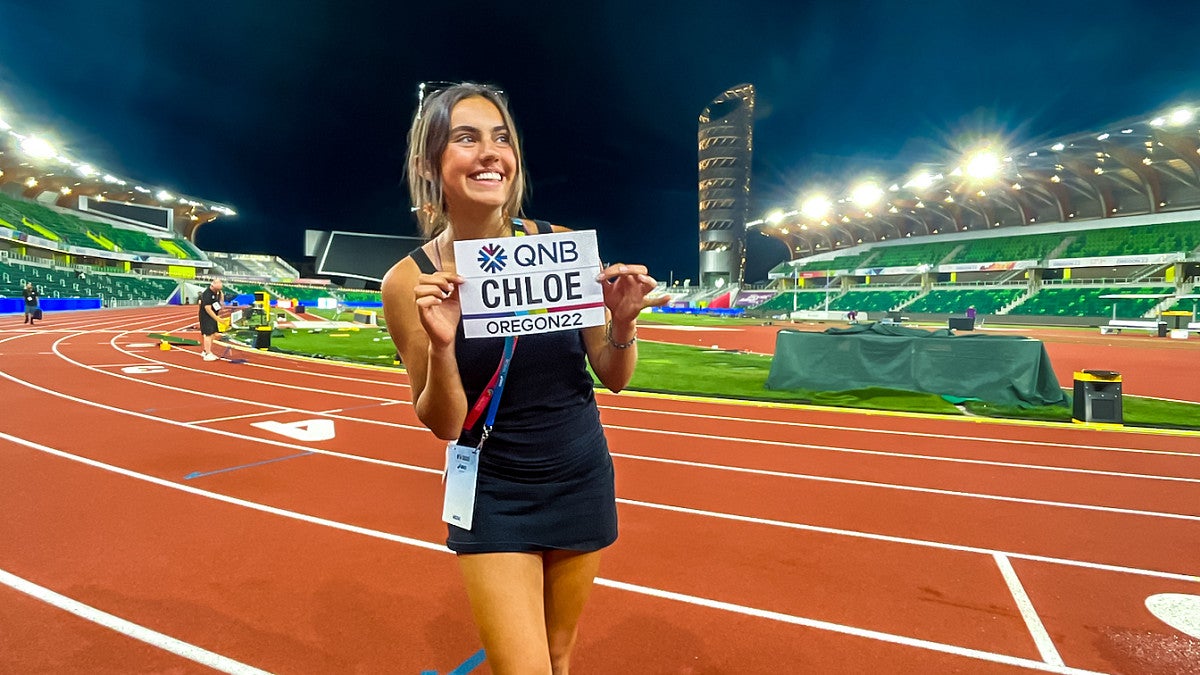
Editor’s note: This is a three-part blog series charting Chloe Montague’s opportunity and experience working in sports journalism at the School of Journalism and Communication. In Part 1 she shares her experience in the sports journalism class. Part 2 is about the sports journalism internship. And in Part 3, she shares her takeaways from the whole experience.
Part 1: A crash course in sports journalism
For five months in spring 2022, track and field took over my brain, and it was amazing. From March through July, I was a student — and then a student intern — in Lori Shontz’s SOJC Track Bureau, a sports journalism class in the School of Journalism and Communication (SOJC) that focuses on in-the-field deadline coverage of track and field. The class then led to a once-in-a-lifetime opportunity to cover the World Athletics Championships in July 2022.
It all started when I applied to the SOJC Track Bureau because of my longtime interest in track and field. I’m a runner and have casually followed the sport since high school, so the opportunity to be on the other side of it — not just watching but producing content for it —sounded like a dream. As an advertising major, though, I was brand new to the world of sports journalism (not to mention journalism, period), so I had a lot to learn.
Our class had two main components: We were in the classroom during the week and at the track on the weekends. In the classroom, we read books about track history, watched videos to learn about race strategy and important athletes, and learned the basics of sports journalism, like writing good summary ledes and conducting effective background research. We also had Zoom sessions with Olympians Christian Taylor and UO alum Raevyn Rodgers. Talking to them was incredible.
On the weekends, we spent our nights at UO’s Hayward Field doing deadline coverage on the track meets hosted there. This meant doing everything from research to athlete interviews to writing the story itself (ideally in an hour or two!).
Some nights we’d be at Hayward until 10 or 11 p.m. Shontz always said we were the “first ones in, last ones out.” We published most of our work on the SOJC Track Bureau website, although as the season went on, our team published on several other outlets as well. We also published photography on our SOJC Track Bureau Instagram.
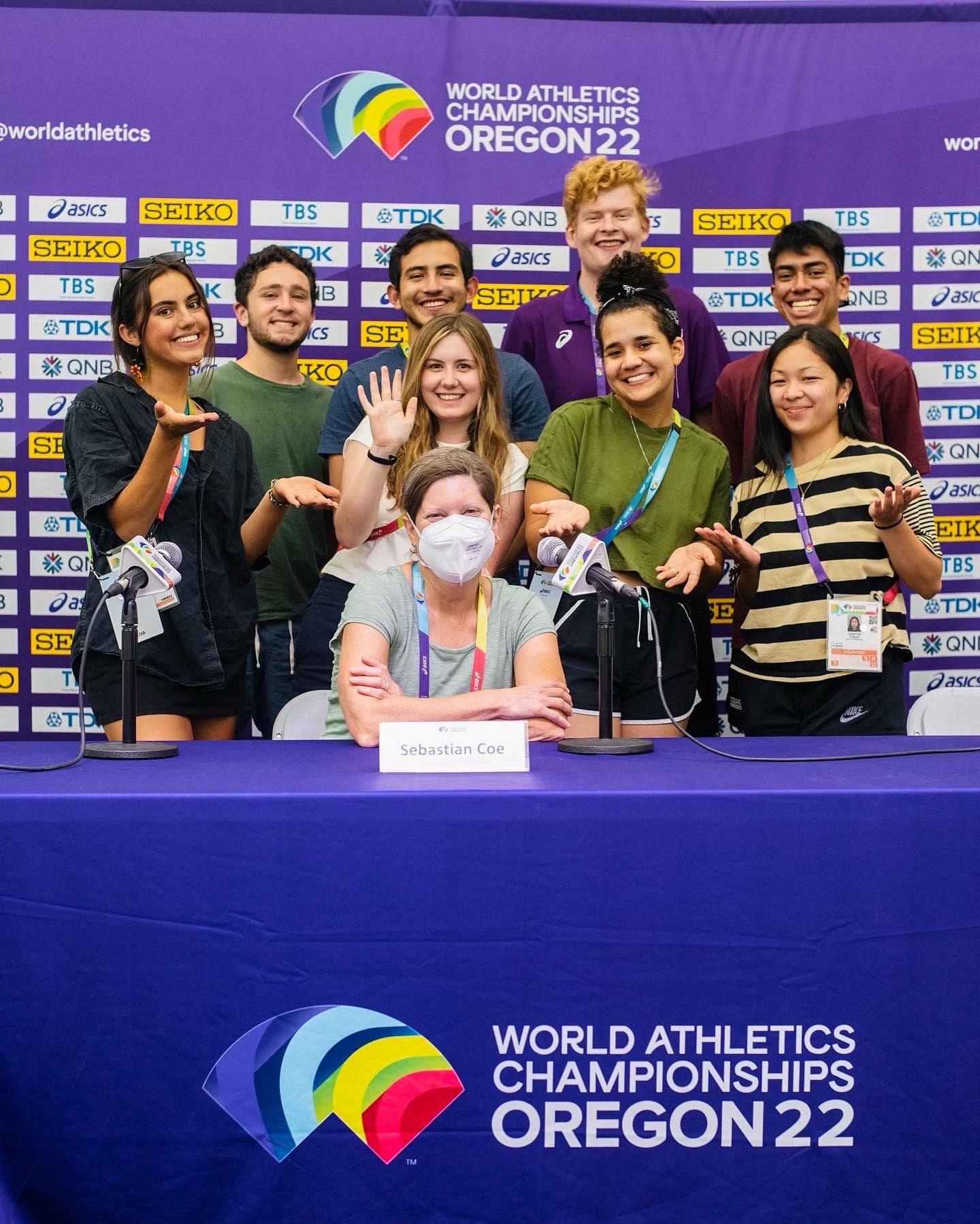
Building sports journalism skills
The big hurdle for me was learning how to ask meaningful questions. Let me amend that: how to ask questions, period. During my first real interview with an athlete, I stood frozen and speechless as the professional journalist next to me rattled off question after question. How did he come up with those so quickly? But I got over the awe-struck mind-blankness by the next meet. Eventually I was asking questions, and thoughtful ones, too. I found that coming up with new questions to ask was a matter of approach: I had to think of the athlete as a person, not a story subject, and then the questions came flowing.
At one point mid-season I asked Shontz if I could try my hand at photography. I’ve always loved photography, but I’d never done journalistic photography, and certainly not sports photography. As an advertising major with a focus on art direction, though, I’m largely visuals-based. This made photo seem like a good fit, and it was a skill I wanted to develop.
And I loved it. Photography was, literally, eye-opening for me. Once I’d picked up the camera (a large one from the J-cage, the equipment room where SOJC students can borrow equipment), I became a hybrid writer-photographer for the rest of the collegiate season. I then turned mainly to photography for the summer internship. (In Part 3 of this blog, I’ll talk more about what it’s like to shoot a track meet.)
The class went by fast. One minute we were testing things out at the Hayward Premiere and the next, it seemed, we were covering professionals at the Prefontaine Classic. In the middle of all those meets, we also covered the Eugene Marathon. Read the story I wrote there! Spring term eased into summer, and we were interns, which I talk about in Part 2 of this series.
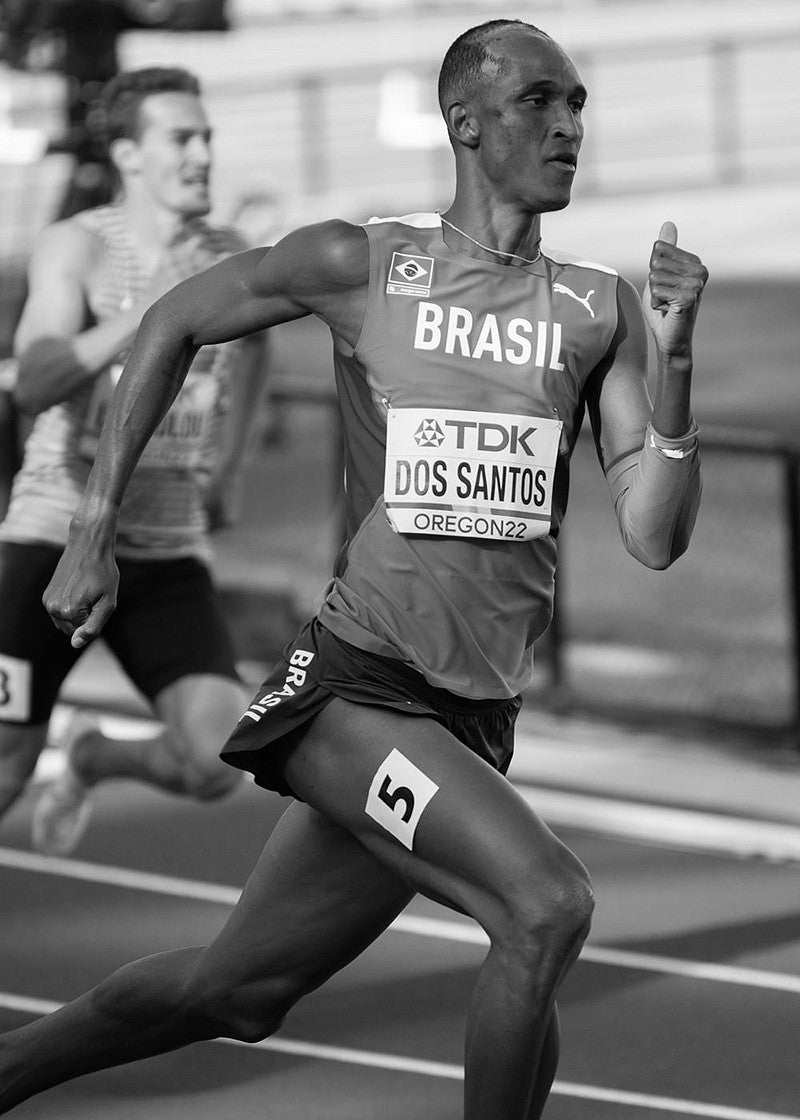
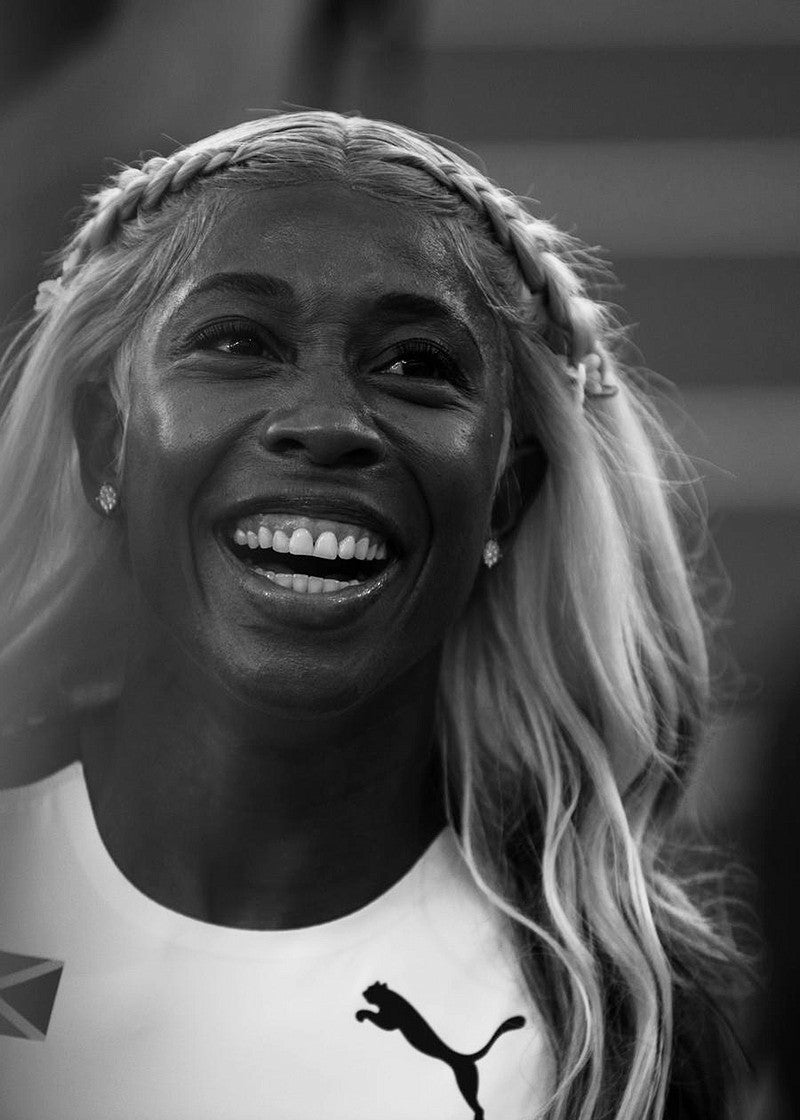
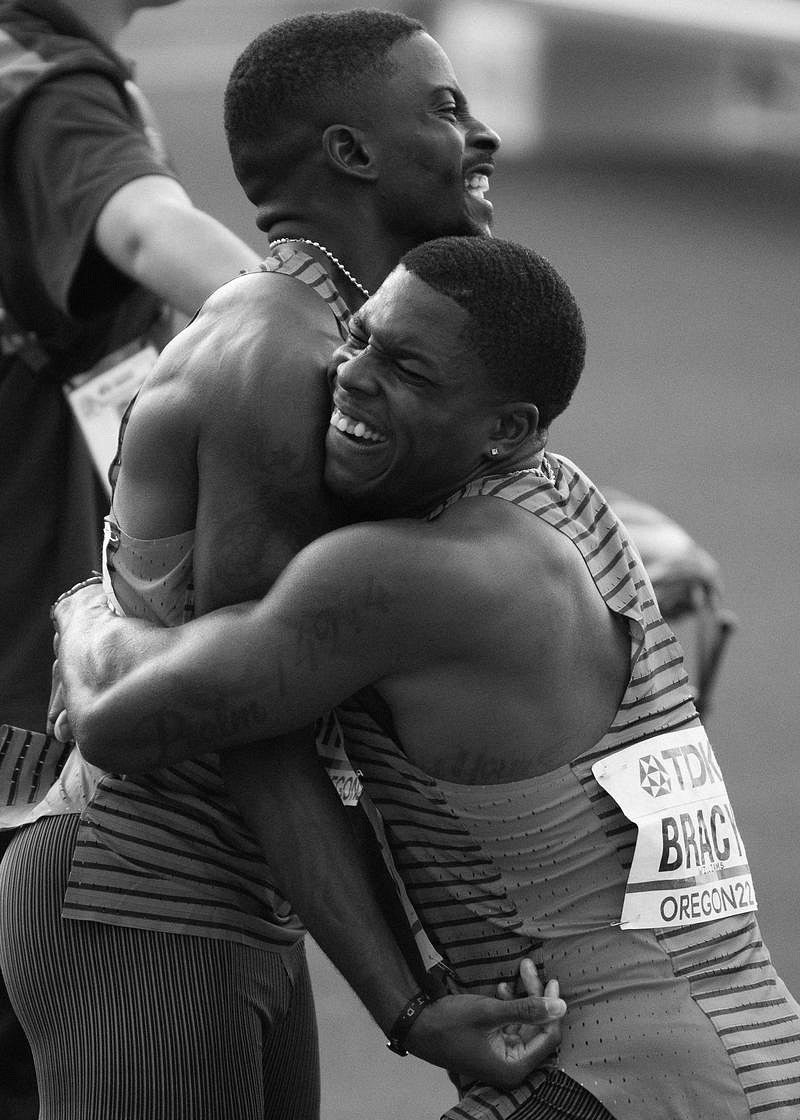
Chloe Montague had the opportunity to stretch her photojournalism muscles during the 2022 USATF Championships and World Athletics Championships. Here’s a selection of her favorite shots, and you can see more on www.chloemontague.design and in Montague’s lookbook from Worlds 2022.
Part 2: Taking on the sports journalism internship
Once school was out, Track Bureau was no longer a class I was taking but my full-time internship. There were 10 of us at this point and two big upcoming meets: USATF Outdoor Championships (USAs) and the World Athletics Championships (Worlds). USAs was the qualifier for Worlds. All the work we did in early summer was in preparation for these two meets. We met every day in Allen Hall to present background research, talk through events and meets and, occasionally, go to press conferences downtown.
I took photographs all four days of USAs and at the USATF team practice. It was hot. Check out some of the photos I took during the meet.
Covering track and field at a global level
The other big event of the summer, of course, was the 10-day-long World Athletics Championships. The situation at Worlds was a little different: Though we were still interns through the SOJC, we were also interning with teams from World Athletics (WA). The writers, for instance, wrote directly for the WA website. I worked with the WA social media team, helping them with graphics and some photo/video work when the need arose.
During those 10 days, I existed almost exclusively in the press tribune at the top of section 219 in Hayward Field, where I sat with the WA social media team. At both the USAs and the Worlds, it was incredibly hot and sunny. The sun was so bright up there that we often had to work under a shirt draped over our computers.
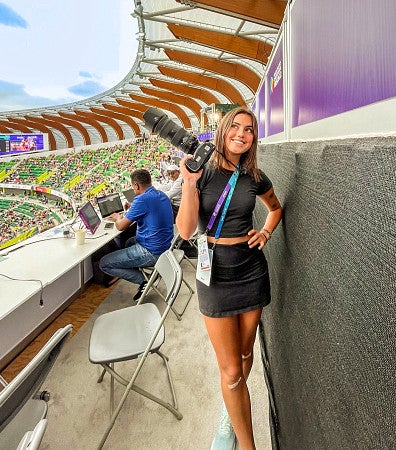
On the graphics side, I used Photoshop to make thumbnail images and winner graphics for WA YouTube recaps and Instagram. On the photo/video side, I did a few things. I would venture into the crowd to get fan reaction shots for WA Instagram. This sometimes got intense. For instance, when the Ethiopian fans packed into the finish-line section to watch Letesenbet Gidey win the 10,000 meters, I was right there among them documenting the whole thing.
I also got involved with the World Athletics Club project, a daily show hosted by heptathlete Chari Hawkins. I would walk around with the production team and shoot behind-the-scenes footage as well as portraits of Hawkins, which became thumbnails for the show. This was possibly my favorite task during my time at Worlds. Hawkins was the nicest person ever, and I had a lot of fun learning about what goes into a production like that.
Finding a rhythm
Every day of Worlds was wildly different, but the format was similar. Each morning, the SOJC Track Bureau team would meet in the UO-tennis-center-turned-media-center. The media center, crucially, had complimentary coffee for all members of the press, and I’d grab some before heading off to the press tribune for the morning session. (Coffee is a non-negotiable for me, and complimentary coffee is possibly one of my favorite offerings of the modern world.)
Most days there were both morning and evening sessions, with the headlining races taking place during the evening sessions. In between, I’d grab lunch, attend a press conference or stay behind in the stands to edit photos. I was going through a huge green-grape phase at the time, so one of my specific memories of the long days at Worlds is eating grapes in the press tribune.
Once the evening sessions were over, we’d stay until all the needed graphics or other projects were finished — usually 8:30 or 9 p.m.
During my downtime, I would take my own photos. I collected these into a lookbook. It’s my favorite thing I produced during my time at Worlds. I started to focus more on process, such as my daily walk to the press tribune, or screenshots of my desktop, or the trajectory my camera took to get a photo. In the lookbook, I compile some of these alongside my favorite photographs.
This experience was a tremendous learning experience for me, which I explain in Part 3.
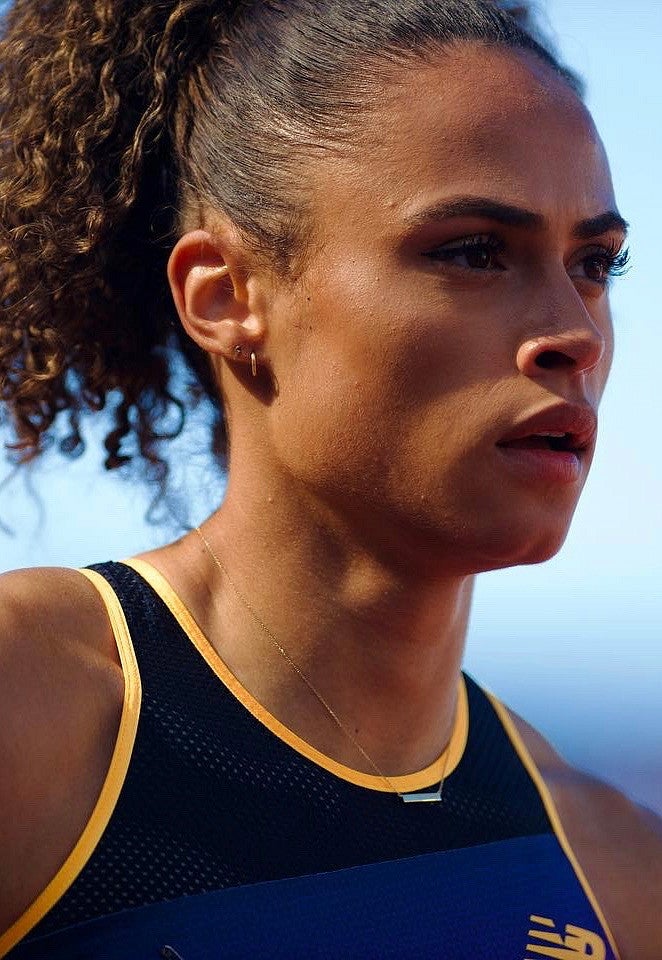
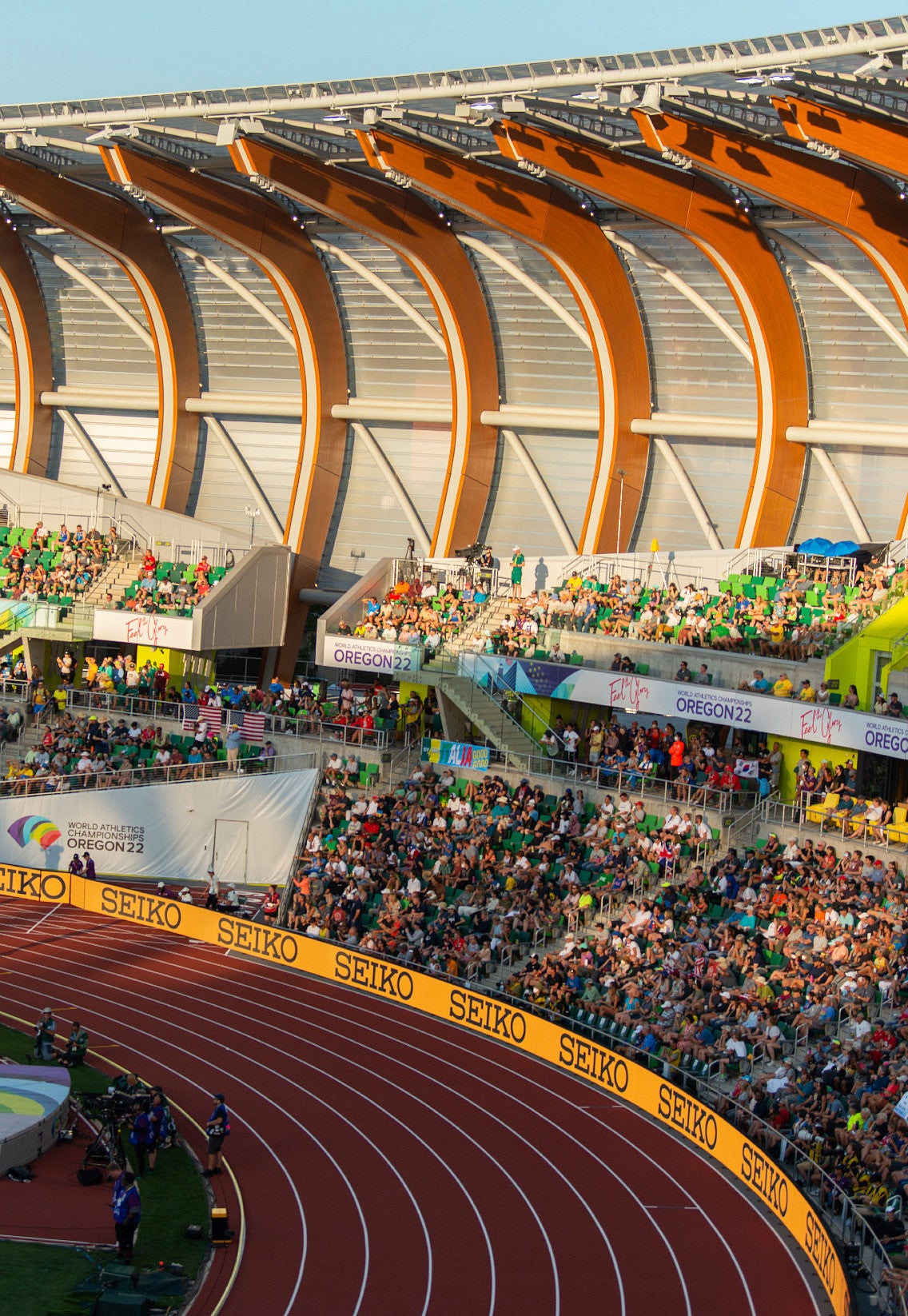
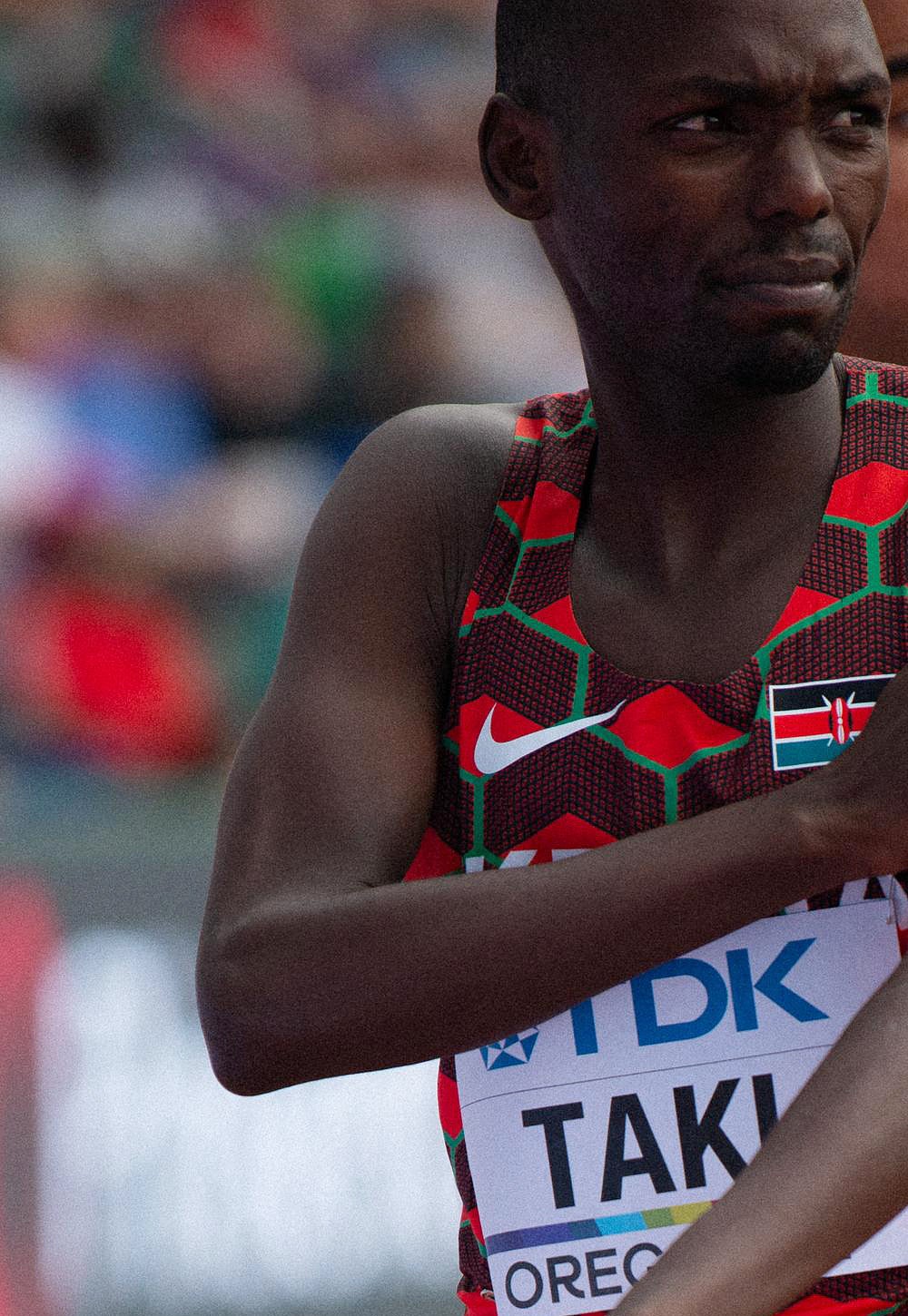
See more of Chloe's work on her website and in her lookbook from Worlds 2022.
Part 3: What I learned after five months of working in sports journalism
I learned so much during my five months as a track-and-field-student-turned-intern. If anything, looking back on the internship now has given me some perspective, and it’s made me all the more appreciative of everything the experience gave me.
For one, there was the photography. Because of the sheer amount of time I spent photographing in the stadium, I couldn’t help but learn a lot. Photographing a meet usually means you’re taking photos for hours and hours, whether in the photo moat by the finish line or from the infield. It can be draining, especially if it’s super rainy or hot, which seemed to be Oregon’s only two weather personalities in spring and summer 2022. But it also means you get a lot of practice and time to talk to the photographers around you. I learned so much that way and met many cool people.
Comparing my first-ever photos at the Hayward Premiere to the photos I took in the weeks and months after, you can trace my learning curve. As I got more practice, I started focusing more on emotion. I cropped closer. I captured better, more intentional moments. I paid more attention to background, to framing, to light.
What it represents, beyond my increased technical knowledge, is a newfound fascination with track and field as a form of art. I began to have questions I wanted to document with my camera: What sorts of feelings play across different athletes’ faces as they stand behind their blocks? How can I capture the formations they run in or the shapes their bodies make together as they fan out across the lanes? When you’re watching a track meet through a visual lens (and especially through a rectangular viewfinder), you realize that the lines of the track, the lines of the athletes and the lines they trace with their movement and eyesight are all part of a whole; it all comes together, and it’s something that hit me as I spent more time experiencing track meets unfold around me.
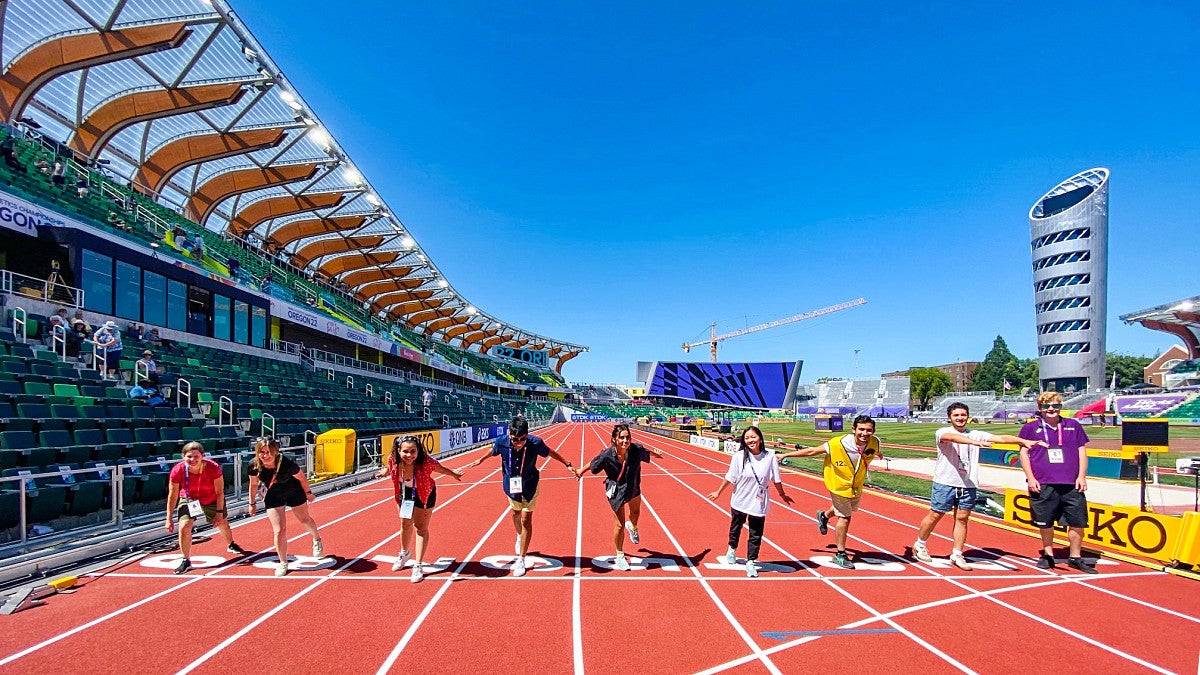
And it’s not just visual. All the hours sitting in the stands taught me how to pay attention to small details such as the sound of the crowd, the transition from a pixelation of green-and-yellow empty seats that slowly turns into a collage of people and clothing as the crowd trickles in to fill the stadium.
Sitting up in the stands in the early weeks of the class, I became a better observer. From up there, you can easily see the race strategy play out in front of you, and I learned to jot down notes that would help me write my stories: “Passes R at 150 mark.” “Starts kick at 200.” “Glances behind him before finish?”
It’s also the perfect place to gather scene-setting notes. At the Oregon Relays, I was tasked with writing the introduction to our team-effort coverage of the 4xmile. To do that, I needed to steep in the scene. That meant paying attention to things like the songs played during each leg (the set list included the Beastie Boys and Oregon’s iconic “Shout”), or the way the crowd came onto the track to form a ring around the first few lanes.
There were also times I was not in the stands but behind them, in the media tent, watching the athletes from a TV as other athletes warmed up nearby. Watching from back there, you hear the roar of the crowd in time with the action playing on TV. You can practically feel the physical heaviness of the stadium. It was a strange outside-insideness, a perspective you can’t get from inside the stadium or from watching coverage at home.
The other spaces I occupied as a photographer affected me as well: in the moat, an arms-length from passing athletes, or some days in the infield, where the action stretched not in front of me but around me. The infield was probably my favorite place because there’s so much going on, so much energy, so much to aim your camera at.
My Track Bureau experience was easily one of the coolest — if not the coolest — experiences I’ve ever had. I still feature the work I produced at the track front and center on my portfolio. I never would have anticipated this before my experience last summer, but the track journalism world is suddenly a career path I can see for myself. I’ve fallen in love with it.
And the track journey is continuing! Just the other day I received an email from the World Athletics team offering a position on the social media team for the 2023 World Athletics Championships this summer — in Budapest! I absolutely cannot wait. It’s incredible, looking back, that a track journalism class has now turned into a real-life freelancer position in an entirely different country. I’m so beyond excited to take everything I learned last summer into this upcoming summer.
—By Chloe Montague, class of ’24
Chloe Montague, class of ’24, is an advertising major and multimedia design minor working as an intern with the SOJC Communication Team and a writing coach with Writing Central. You can find more of her work on her portfolio at chloemontague.design and in her lookbook from Worlds 2022.
